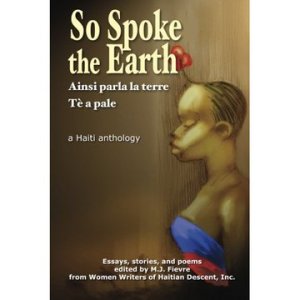A History of Royal Family Jewels: From Queen Elizabeth to Meghan Markle
The British Royal Family's jewelry collection is not just an array of sparkling treasures; it is a rich tapestry of history, tradition, and symbolism. These jewels, passed down through generations, represent milestones in British history and personal stories of the royals who wore them. From Queen Elizabeth II’s stately collection to Meghan Markle’s modern, ethical choices, royal jewelry reflects the evolving values of the monarchy and its connection to the public.
The Legacy of Queen Elizabeth II’s Jewels
Coronation Regalia
Queen Elizabeth II’s coronation in 1953 was a spectacle of grandeur, highlighted by the dazzling Imperial State Crown. This iconic piece, adorned with over 2,800 diamonds, rubies, sapphires, and pearls, symbolizes the sovereignty and splendor of the British monarchy. Alongside the crown, the coronation regalia, including the Sovereign’s Orb and Sceptre, embodies centuries of craftsmanship and history, drawing from traditions dating back to the medieval era.
Personal Collection
Queen Elizabeth II’s personal jewelry collection is equally iconic. Her signature pearl necklaces and brooches became synonymous with her poised elegance. Notable pieces include the Cullinan Diamond, the largest gem-quality diamond ever discovered, and the Delhi Durbar Tiara, a masterpiece crafted for Queen Mary in 1911. These jewels, rich in history, reflect the Queen’s deep appreciation for tradition and continuity.
Princess Diana’s Modern Touch
Revolutionary Style
Princess Diana brought a modern sensibility to royal jewelry. She often chose designs that were approachable yet stunning, connecting her with the public in an unprecedented way. Diana’s love for sapphires, most notably her engagement ring, set with a 12-carat blue Ceylon sapphire surrounded by diamonds, was a hallmark of her style. This iconic ring, now worn by the Princess of Wales, Kate Middleton, remains a symbol of her enduring legacy.
Inheritance and Influence
Diana’s jewelry collection continues to influence royal traditions. Her sons, Prince William and Prince Harry, inherited pieces from her collection, such as the Aquamarine Ring Harry gifted to Meghan Markle. These heirlooms not only preserve Diana’s memory but also highlight her impact on the evolution of royal jewelry.
Kate Middleton: Continuing the Legacy
Adapting Heirlooms
Kate Middleton, the Princess of Wales, seamlessly integrates heirlooms into her wardrobe. Diana’s engagement ring and the Cambridge Lover’s Knot Tiara, originally owned by Queen Mary, are among her most celebrated pieces. These treasures connect Kate to royal history while complementing her polished style.
Signature Style
Kate’s jewelry choices strike a balance between tradition and modernity. Whether wearing vintage brooches or contemporary designs, her understated elegance has become a defining feature of her public appearances. Notable additions include pieces from designer Kiki McDonough, reflecting her penchant for timeless sophistication.
Meghan Markle: A New Era of Royal Jewelry
Minimalism and Sentimentality
Meghan Markle, the Duchess of Sussex, brings a fresh perspective to royal jewelry. Her engagement ring, designed by Prince Harry, features diamonds from Princess Diana’s collection alongside an ethically sourced diamond from Botswana. Meghan’s preference for sentimental and meaningful jewelry, such as the Aquamarine Ring she wore on her wedding day, underscores her unique approach to royal tradition.
Breaking Tradition
Meghan’s choices often lean toward ethical and contemporary brands, reflecting her individuality and modern values. By prioritizing sustainability and personal significance, she redefines what it means to wear royal jewelry in the 21st century.
The Evolution of Royal Jewelry Over Time
Traditional Values vs. Modern Trends
Royal jewelry has always mirrored societal changes. While the grandeur of Queen Elizabeth II’s jewels symbolizes enduring tradition, Diana, Kate, and Meghan’s choices highlight a shift toward personal expression and relatability.
Sustainability and Ethical Considerations
Recent trends in royal jewelry embrace ethical sourcing and sustainability, aligning with global efforts to promote responsible luxury. Meghan Markle’s preference for conflict-free diamonds and ethical designers sets an example for modern royal families.
Iconic Pieces Across Generations
Tiaras and Crowns
Tiaras remain a cornerstone of royal jewelry. The Queen Mary’s Fringe Tiara, famously worn by Queen Elizabeth II on her wedding day, and the Cartier Halo Tiara, worn by Kate Middleton at her wedding, are timeless symbols of royal elegance.
Necklaces, Rings, and Brooches
Royal necklaces, such as the Nizam of Hyderabad necklace gifted to Queen Elizabeth II, and brooches like the Williamson Diamond Brooch, showcase exceptional artistry and history. These pieces continue to captivate audiences worldwide.
The royal family’s jewelry collection is more than a display of opulence; it is a narrative of history, heritage, and evolving values. From Queen Elizabeth II’s majestic collection to Meghan Markle’s contemporary touch, these jewels tell a story of tradition and transformation. As each generation adds its own chapter, the fascination with royal jewels endures, offering a glimpse into the past and a beacon for the future.





Very nice style of narrative writing. I like how it tells a story. I might use this tip for my writing. Great Poem.